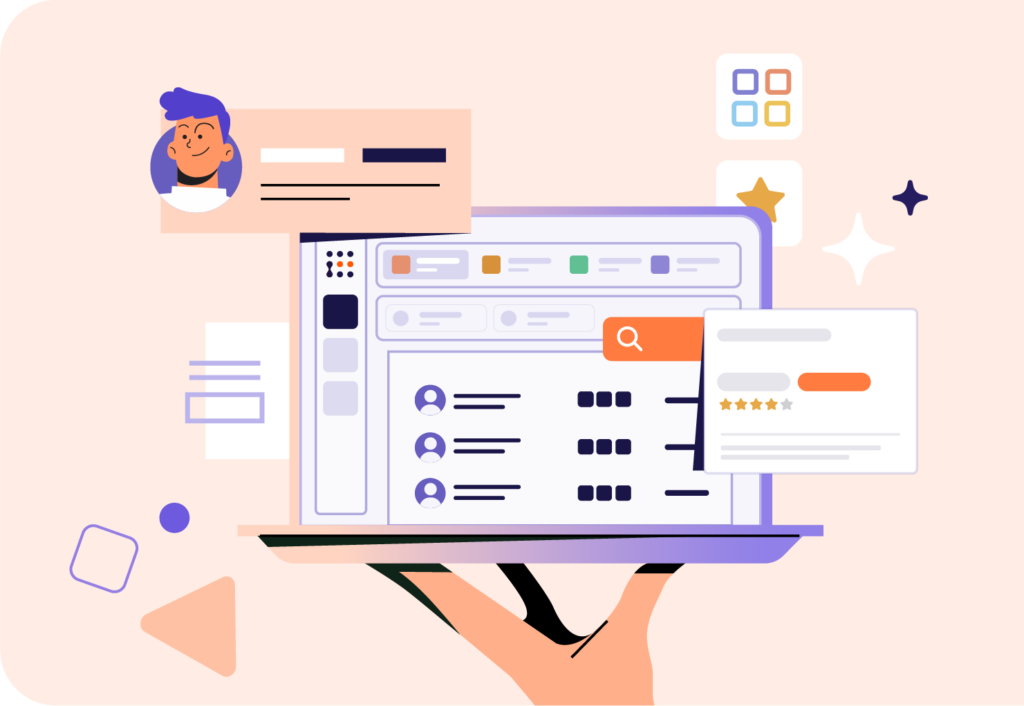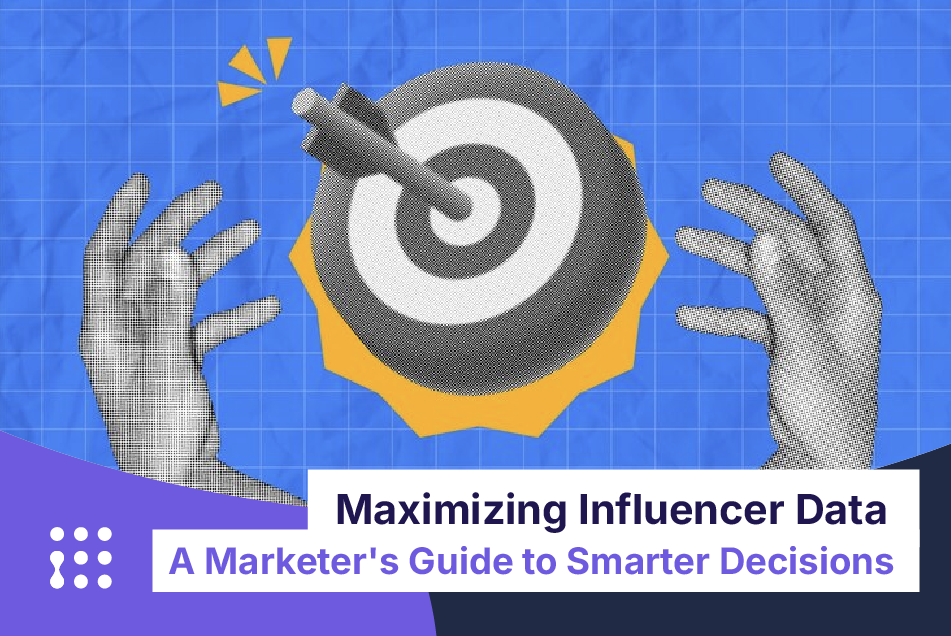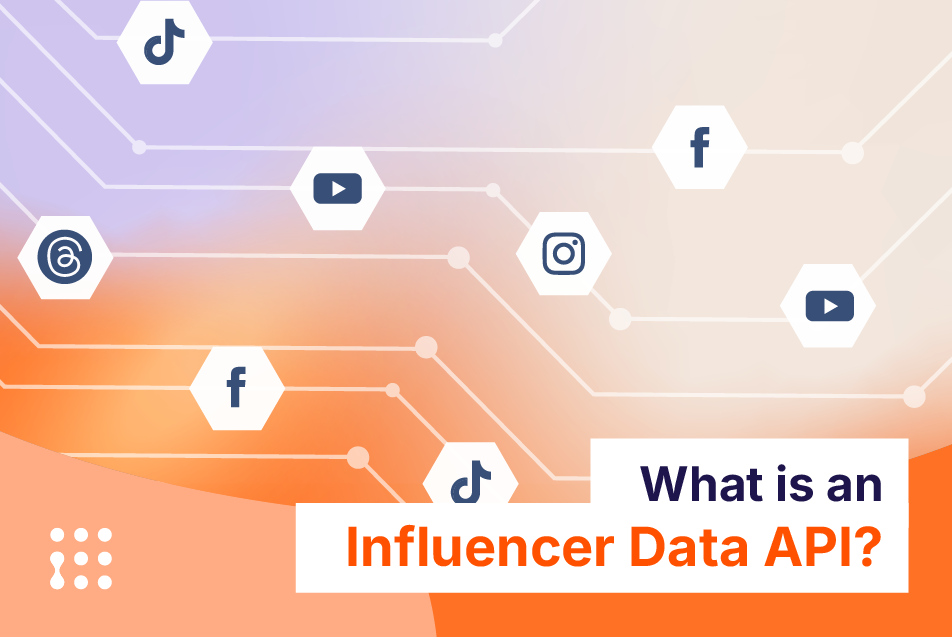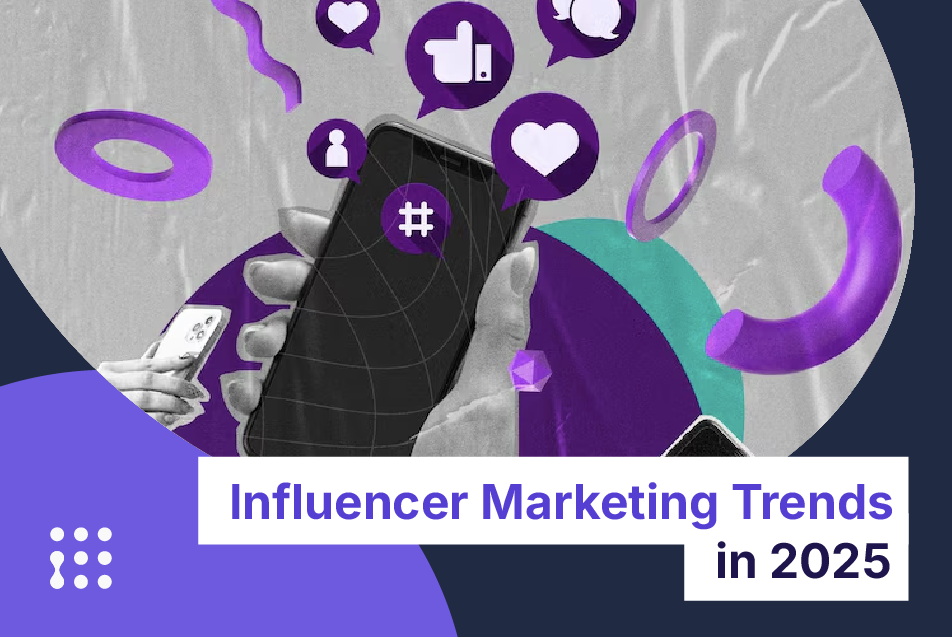The customer journey visualizes how customers go from discovering the brand to becoming loyal advocates. Thanks to it is possible for marketers to spot the right time and place to engage with potential customers.
Developed in the late ‘90s to better understand how customers interact with brands to make their purchase decisions, the customer journey is a formidable tool to understand how a brand can better nurture its customers.
In recent years, the rise of influence marketing as an effective marketing strategy has created infinite new opportunities to engage customers at different stages of their journey in a manner that many find less invasive than traditional marketing.
What is influencer marketing?
Influencer marketing is a form of marketing that involves collaborating with individuals who have a significant online following to promote a brand, product, or service.
Influencer marketing leverages the influence and popularity of social media personalities and content creators to reach and engage with highly segmented potential customers through their decision-making process.
By partnering with influencers who align with their target audience, businesses can tap into their credibility and authority, effectively accessing the trust and loyalty established between the influencer and their followers.
Influencer marketing often involves sponsored content, product placements, or affiliate marketing. Successful influencer marketing campaigns can yield significant results by harnessing the power of authentic and relatable endorsements to connect with potential customers on a more personal level.
What is the customer journey?
The customer journey is a 5-step process that exemplifies how an individual goes from becoming aware of a product or service to being a loyal customer of it. It involves understanding the customer’s needs, preferences, and pain points at each stage, to provide a seamless and satisfying experience that fosters loyalty and advocacy.
By mapping and analyzing the customer journey, businesses can identify areas for improvement, optimize their processes, and tailor their marketing efforts to better cater to their customer’s needs and expectations.
Each potential customer will go from not knowing about a brand or product to knowing about it, this is the awareness phase, and at this point, there is no intention of buying the product but just a passive learning moment.
The awareness phase is followed by the interest phase, which is characterized by the potential customer researching more about the product, and similar products, to understand which one fits its needs the best.
After collecting enough information, the customer would pass to the decision phase, here is when the actual sale is made.
The next phases are very important to create a lasting connection with the customer and turn a one-off sale into a returning customer. The loyalty phase is the first after-purchase moment and is focused on maintaining the engagement with the customer to empower their decision and strengthen the relationship.
After successfully establishing loyalty brands should focus on developing the advocacy phase at this point the customer is not just happy with his choice and will come back once again in need of the same product or service but will also present the product/service to people in its circle.
Why do Brands need Customer Journey?
The customer journey is a powerful tool by which brands can get closer to their customers and understand the process they go through before and after the purchase of a product or service.
By mapping the customer journey, marketers can understand when potential customers are going to be more susceptible to being approached and what kind of information they are looking for at different points.
Overall the customer journey allows marketers to focus their efforts and resources on those moments and messages that matter.
How can influencer marketing help all the stages of the customer journey?
When leveraged correctly, influencer marketing can effectively target each step of the customer journey and improve the results of any brand’s marketing efforts.
Influencers have established a trusted relationship with their audience and their opinions and suggestions are often taken into consideration when making decisions about purchases.
Way too often influencers are only considered for the awareness phase and get neglected that one of the things they excel in is community building.
Potential customers are increasingly looking at social media and influencers for suggestions and opinions about products and services. So not only they can boost brand awareness but influencers are going to be a repeated and trusted touchpoint between potential customers and brands.
While traditional advertising largely relies on being placed where the customer is going to see it, advertising through influencer marketing is going to be shown where the customer is actively going to look for information.
Because of its unique properties influencer marketing is an excellent way to establish a brand image and a relationship with customers.
But let’s go with order and see how each of the phases of the customer journey can be targeted by different approaches to influencer marketing.

Awareness
The awareness phase is where influencers are usually employed and this is because they allow for access to a unique and highly segmented audience.
In this phase, the goal is to reach as many potential customers as possible while introducing them to your brand. Conversions or purchases are not going to be a priority for now.
To kick-start awareness:
- Collaborate with relevant influencers. This way the brand will gain access to its audiences and show itself as a player in the industry.
- Cast a wide net with micro-influencers. Micro-influencers are great when it comes to maximizing reach, and therefore awareness, while targeting a selected audience.
- Product seeding campaign. Send your product to many influencers and earn unadulterated exposure to their audience.
Interest
In this phase of the customer journey customers are looking for more information, they have questions and they are looking to find answers.
The influencer’s role here is to help them navigate various options and point them to the best fitting for them.
In this phase is important that the potential customers start building trust in the brand, recognize it as a valuable player in the industry, and be proud of its product.
Campaign ideas to nurture this phase are:
- Reviews. Have a content creator go through the product and explain what it can do, which features are available, and how they can help in situations that relate to their audience. Using influencers in this role is especially helpful to cover many niche use cases that may not be as obvious outside of particular communities.
- Personal experiences. They allow the influencers to relate their experiences with your product and create a more genuine connection with the audience.
- Q&As. Organizing live events hosted by influencers in which they can take questions and solve any doubt about the product.
Decision
The potential customers are about to lose their potential status and become real customers. Now is where your unique selling proposition comes into play.
Even when trust and recognition are established is still important to be able to give that extra incentive to be different from the competition.
This is when is important to use:
- Access to exclusive deals. Creating special offers for specific content creators is a great way to push their audience to make the purchase.
- Direct-to-shop feature. Allowing users to reach the product from the post or story that mentions it without having to search for it.
- Giveaways and ruffles. Encourage conversions by creating the possibility of obtaining a prize or a special experience tailored around the influencer’s niche.
Loyalty
After the purchase is important to give the customers a reason to stay in the community, strengthening the trust bond created previously.
For this phase is crucial to show that the brand is seriously committed to its values and truly cares about the community around it.
The loyalty phase can be nurtured by:
- More suggestions about the product. Giving new insights about what the product can do and how it can be useful beyond the first impression.
- Designating brand ambassadors. Transform some of the long-term influencers into brand ambassadors giving them a more prominent role and connection with the brand.
Advocacy
In the advocacy phase, the goal is to shift the customers from passive supporters to active and vocal advocates for the brand.
This phase needs to foster engagement with the brand and content creation, to push for creativity and participation.
Advocacy can be promoted by:
- Creating campaigns focused on user-generated content. Activate the community by organizing special campaigns through your brand ambassadors to generate organic content around your brand.
- Incentivize user reviews. Create discounts or special rewards for those users that leave a review.





